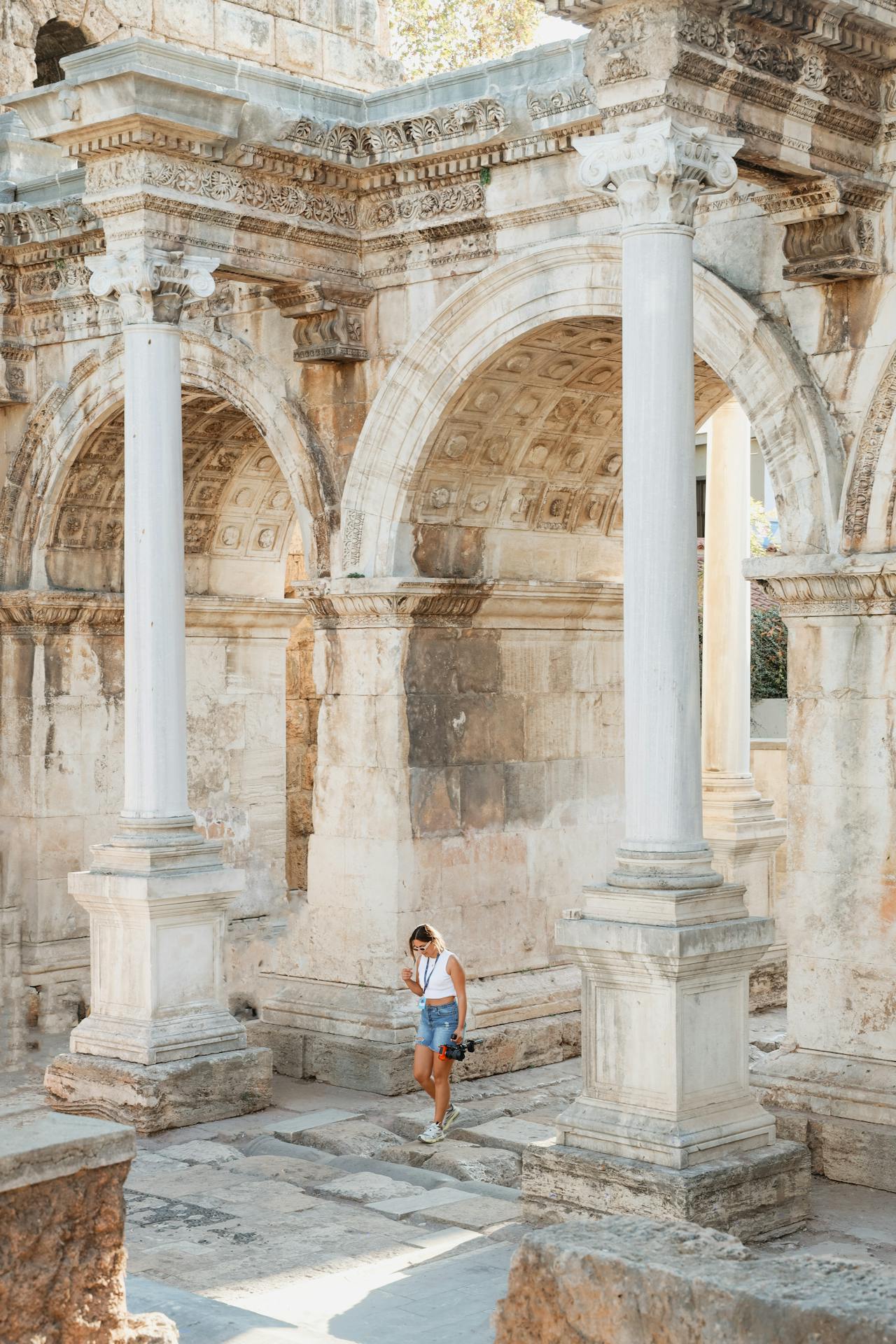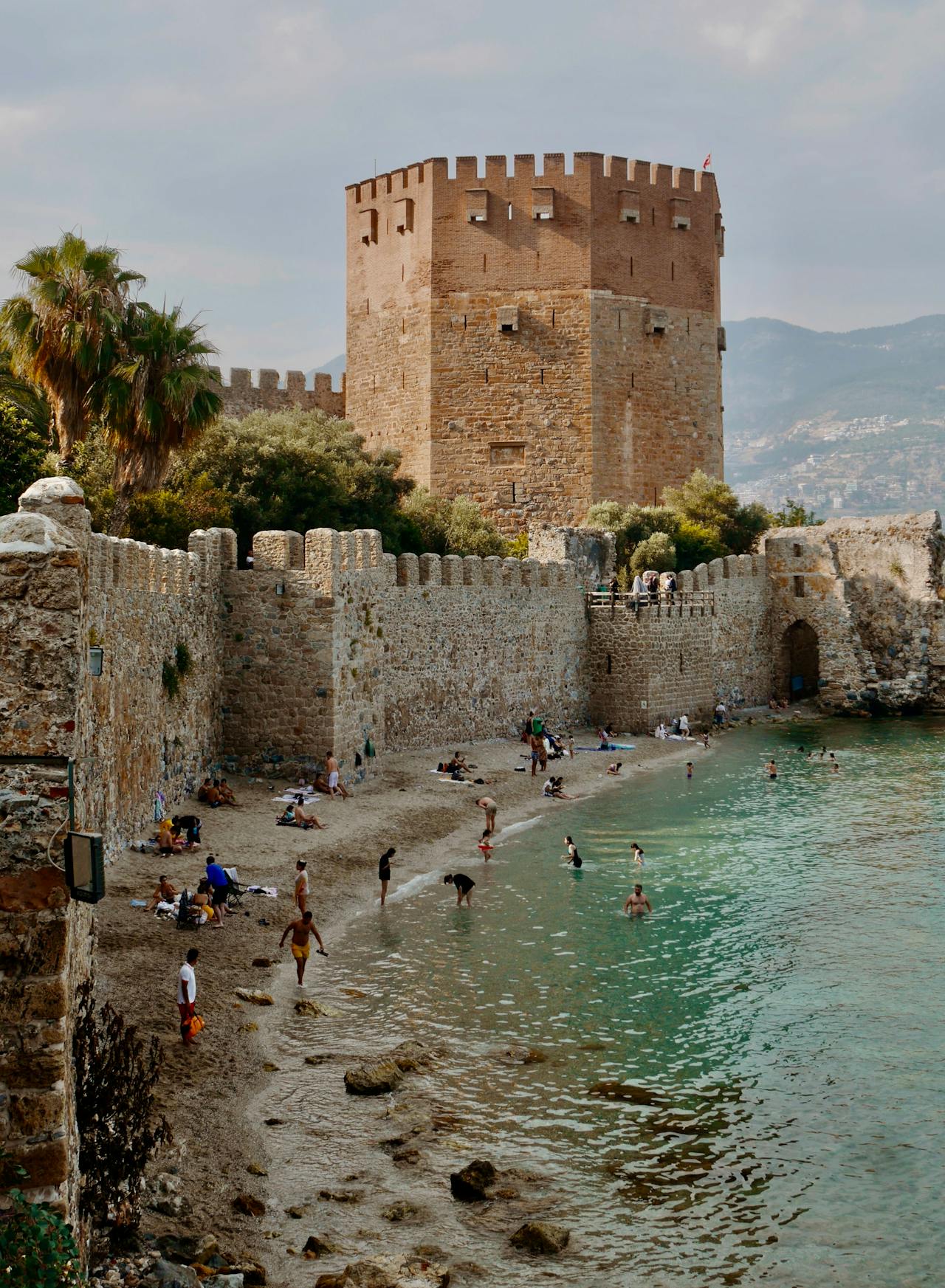Note that iPhone devices from Mainland China aren’t eSIM compatible. Also iPhone devices from Hong Kong and Macao aren’t compatible (except for iPhone 13 Mini, iPhone 12 Mini, iPhone SE 2020 and iPhone XS)
Turkey is a country of diverse landscapes, rich history, and breathtaking coastlines. Whether you’re exploring Istanbul’s cultural gems, Cappadocia’s fairy chimneys, or Ephesus’s ancient ruins, the time of year you visit can shape your experience.
So, when is the best time to visit Turkey? The answer depends on what you want to do—whether it’s sightseeing in pleasant weather, enjoying a beach vacation, or experiencing Turkey’s vibrant cultural festivals.
In this guide, we’ll break down Turkey’s weather by season, the best time for specific activities, what to pack, and how to make the most of your trip.
Best Time to Visit Turkey: Quick Overview
- Spring (March – May): The best season for sightseeing, mild weather, and blooming landscapes.
- Summer (June – August): Ideal for beach lovers and coastal trips but very hot for inland travel.
- Autumn (September – November): Another great time for sightseeing, with fewer crowds and pleasant temperatures.
- Winter (December – February): Perfect for skiing in Uludağ or exploring Turkey’s historic sites with fewer tourists.
Turkey’s Weather by Season: What to Expect

Spring (March – May): The Best Season for Sightseeing
Spring is one of the most popular times to visit Turkey, offering mild temperatures, fewer tourists, and lush greenery.
- Weather in Turkey in April: Temperatures range between 12°C – 20°C (54°F – 68°F) in cities like Istanbul and Cappadocia. The air is fresh, and the landscapes are in full bloom.
- Why Visit? Spring is perfect for walking tours, outdoor adventures, and hot air balloon rides in Cappadocia without the extreme summer heat.
- Best Places to Visit:
- Istanbul – Enjoy the city’s historical sites like Hagia Sophia and the Blue Mosque in pleasant weather (Explore Istanbul in 3 Days).
- Cappadocia – Take a hot air balloon ride over colorful valleys (See Cappadocia from Above).
- Ephesus & Ancient Cities – Discover the well-preserved ruins of Ephesus and other ancient wonders without peak summer crowds (Explore Turkey’s Ancient Cities).
Summer (June – August): Best for Beaches, Not for Sightseeing
Turkey’s summer is hot and dry, especially in central and southern regions.
- Average Temperatures:
- Istanbul: 28°C – 34°C (82°F – 93°F)
- Cappadocia: 30°C – 38°C (86°F – 100°F)
- Antalya & Bodrum: 30°C – 40°C (86°F – 104°F)
- Why Visit? Perfect for coastal trips and relaxing by the sea, but sightseeing can be exhausting due to extreme heat.
- Best Places to Visit:
- Turquoise Coast: Enjoy the beaches of Antalya, Bodrum, and Fethiye, and take a boat tour to Butterfly Valley and Ölüdeniz.
- Pamukkale: While summer is hot, early morning visits to the white travertine terraces can be enjoyable.
- Cappadocia: The region is hot during the day, but sunset hikes and hot air balloon rides remain breathtaking.
Global Coverage, Local Rates
Experience hassle-free connectivity wherever you go.
Autumn (September – November): Ideal for Culture & Nature
Autumn is another fantastic time to visit Turkey, with cooler temperatures, fewer crowds, and colorful landscapes.
- Weather:
- Istanbul & Cappadocia: 15°C – 25°C (59°F – 77°F)
- Ephesus & Pamukkale: 20°C – 30°C (68°F – 86°F)
- Why Visit? This is a great season for both sightseeing and outdoor adventures, as the weather is comfortable.
- Best Places to Visit:
- Ephesus & Pamukkale: Visit Turkey’s historical wonders without the summer heat (Ephesus Travel Guide).
- Istanbul: Stroll through Topkapi Palace, the Grand Bazaar, and the Bosphorus without the summer crowds.
- Cappadocia: The cooler weather makes it perfect for hiking and exploring underground cities.
Winter (December – February): Great for Skiing & Cultural Experiences
Winter in Turkey is cold and snowy in some regions but mild in coastal cities.
- Best for: Winter sports, cultural trips, and fewer tourists.
- Weather:
- Istanbul: 5°C – 12°C (41°F – 54°F), occasional snow.
- Cappadocia: -5°C – 5°C (23°F – 41°F), magical winter landscapes.
- Uludağ & Palandöken: Best for skiing and snowboarding.
- Why Visit?
- Skiing in Uludağ – Turkey’s best winter sports destination.
- Snowy Cappadocia – Experience hot air balloons over a snowy fairy-tale landscape.
- Fewer Tourists – Perfect for photographers and cultural travelers.
What to Pack for Turkey by Season?

Spring & Autumn Packing List
- Light jacket or sweater for cool evenings
- Comfortable walking shoes
- Sunglasses & hat for sun protection
- Rain jacket (spring showers are possible)
Summer Packing List
- Light, breathable clothing
- Sunscreen & hat for strong sun exposure
- Swimsuit for beach trips
- Reusable water bottle
Winter Packing List
- Warm coat, scarf, gloves for colder regions
- Layers for fluctuating temperatures
- Waterproof boots if visiting snowy areas
How to Make the Most of Your Trip to Turkey?

- Plan Your Itinerary Around the Weather – If you love history, visit in spring or autumn; if you love the beach, go in summer.
- Visit Multiple Regions – Combine a trip to Istanbul, Cappadocia, and Ephesus for a diverse experience.
- Book Attractions in Advance – Popular attractions like Cappadocia’s hot air balloon ride get fully booked quickly in peak seasons.
- Use an eSIM for Seamless Connectivity – Stay connected effortlessly while traveling across Turkey.
Stay Connected in Turkey with Voye Global eSIM

Turkey is filled with amazing destinations, and staying connected helps you navigate easily, share your adventures, and stay in touch. With Voye Global’s eSIM for Turkey, you get fast, seamless connectivity without the hassle of SIM cards.
- Instant Activation – Set up before you arrive.
- Fast 4G/LTE Coverage – Stay connected nationwide.
- No Roaming Fees – Transparent pricing, no surprises.
Your Journey, Our eSIM
Stay online abroad with instant activation.
Get Ready to Pack!
The best time to visit Turkey depends on your travel style. Spring and autumn are best for sightseeing, summer is ideal for beaches, and winter offers unique cultural and skiing experiences.
Whenever you visit, Turkey’s history, landscapes, and cuisine promise an unforgettable trip!
Seamless Mobile Data Everywhere
















